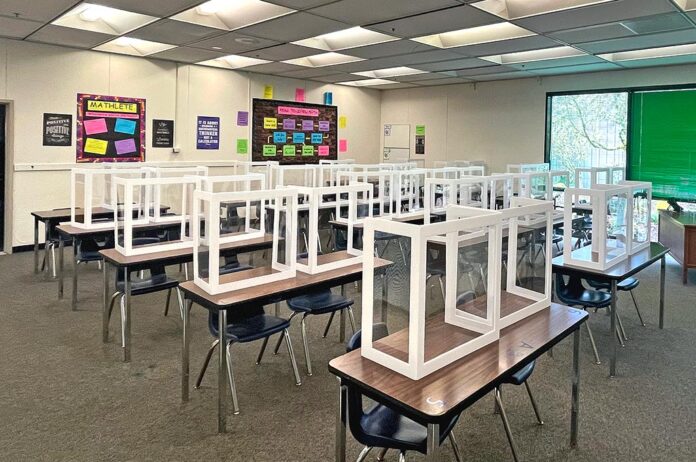
On March 12, 2020, the Tigard-Tualatin School District (TTSD) gave the order to shut down schools for two weeks in response to the new virus in town, SARS-Cov-2.
Little did anyone know, students would not see classrooms again for over a year later. Now, students are set to return to an in-person hybrid learning model April 19.
In a March 5 announcement, Oregon Governor Kate Brown stated that she would issue an executive order to have public school students return to the classroom, citing the low risk of COVID-19 transmission inside schools.
“The science is very, very clear: with proper safety measures in place, there is a low risk of COVID-19 transmission in school,” Brown said. “Oregon parents can be confident about sending their children back to a classroom learning environment.”
The March 12 executive order requires that all Oregon public schools offer either hybrid or full in-person instruction by the week of March 29 for grades K-5 and by the week of April 19 for 6-12. Fortunately for the district, their return-to-school plan, having been developed over the last year, lined up near perfectly with Brown’s required return dates.
Through March, TTSD’s middle and high schools gave several community presentations outlining their plans for hybrid learning. So, come April 19, what is the middle and high school experience going to look like? (to learn more about elementary, please visit last month’s article)
As it remains an option for families and students to return to hybrid in-person instruction, part of the student body will stay in the classroom and others at home, and several logistical issues had to be addressed. Many of which to do with concerns from families about instructor changes if a student moves from Comprehensive Distance Learning (CDL) to the hybrid format.
On the high school level, this is dealt with by educators teaching to both an online and in-person audience simultaneously. It will be up to the instructor how they manage both audiences, but they have been given several options by the school administration.
With this solution, students will rarely need to change their schedule but will move classrooms throughout the day and be around upwards of eight groups of students total convoluting contact tracing.
The middle schools – Fowler, Hazelbrook and Twality – handle the situation differently. Should students have opted for the hybrid solution, they will take classes with the same group of students throughout the day while in the same classroom. To do this, the 12-18 in-person student cohorts will need rearranging, and some students may not maintain all of their current instructors.
Besides the logistical happenings, the typical school days will be vastly different than in previous years.
“Coming back to school this year is not going to look the same that (students) are used to,” said Tualatin High School Principal Michael Dellerba. “There will be strict guidance around entering, exiting the building, how they move through the building, how they do lunches, how they interact in class.”
For one, the school populations will be split into two overarching groups alphabetically. In middle schools, the A-L group will attend full school days on Monday/Thursday with M-Z on Tuesday/Friday. During these in-person days, the students will be taking their core subject classes (math, science, language arts, social studies), and on CDL days, students will be taking their electives, independent study and other non-core subjects.
In high schools, A-L will attend Monday/Tuesday and M-Z on Thursday/Friday, with Wednesday reserved as an independent workday as well as a deep clean of the school. On the CDL days, students will attend their online classes from home.
The classrooms themselves will include plexiglass dividers on each desk space provided for each student.
What may be the most striking difference, though, are lunch-time routines. These have been dealt with a bit differently at each school, but the high schools and Fowler Middle School will have their lunches in the classroom rather than in the cafeteria or off-campus. At Hazelbrook and Twality, each cohort has a reserved wide-open area (such as the gym or commons) and a table per student spaced eight to 10 feet apart with dividers. At the middle school level, students will also get a bit of controlled free time towards the end of lunch.
Of course, despite all of the preventative measures, a COVID-19 case may still arise.
Through the middle schools, should a student contract COVID-19, only that student’s cohort of 12 to 18 students would have to quarantine and distance-learn for the next 10 days. At high schools, the quarantine period would be the same, but each of those student’s classes would have to stay home.
To learn more about your school’s return-to-school plans, see TTSD’s YouTube channel.



















